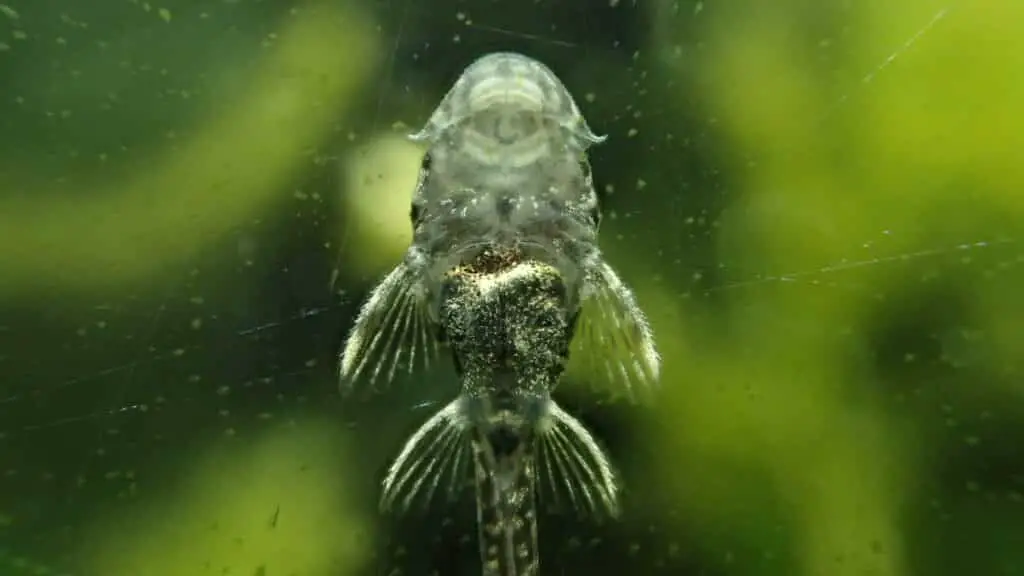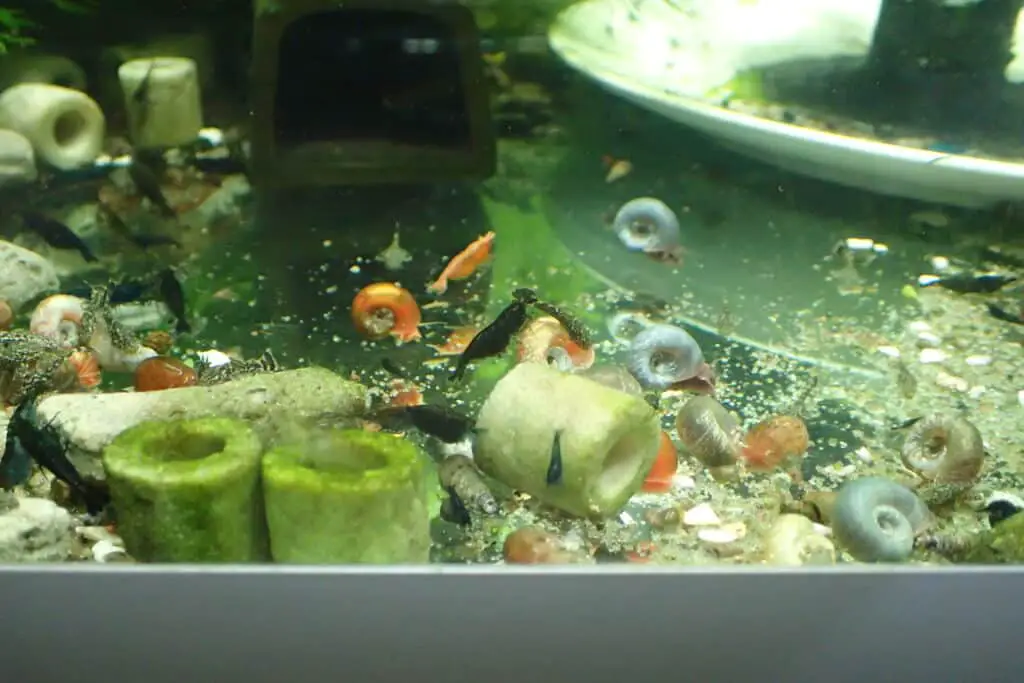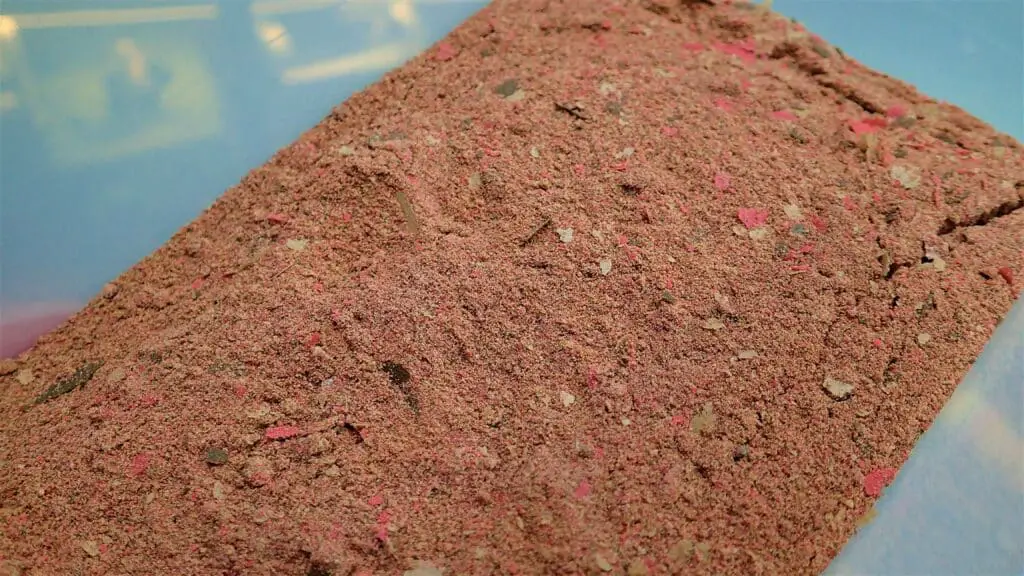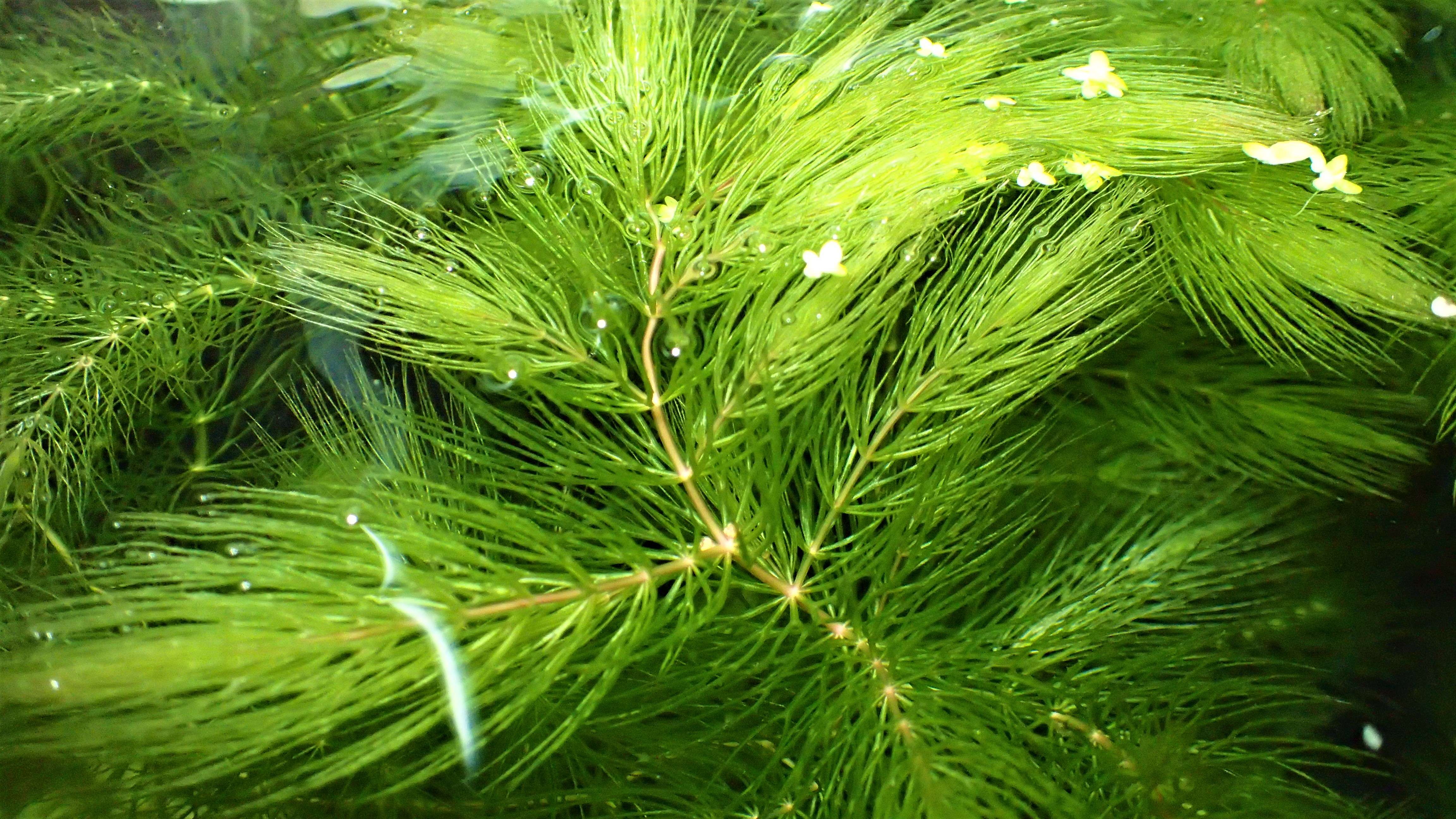I.Introduction
Choosing the right tank mates for cherry shrimp is crucial to maintaining a harmonious and thriving aquatic environment. As a popular and colorful addition to freshwater aquariums, cherry shrimp are admired for their vibrant red hue and peaceful nature.
This ultimate guide to cherry shrimp tank mates will provide you with valuable insights into the best companions for these fascinating creatures, as well as essential care tips to ensure their well-being.
In this comprehensive guide, we will explore the most compatible tank mates for cherry shrimp, taking into consideration their unique requirements and preferences.
By carefully selecting the right fish, shrimp, and snail species, you can create a thriving shrimp aquarium that showcases a lively cherry shrimp community.
From peaceful nano fish to other dwarf shrimp species and beneficial snails, we will discuss a wide range of options that can coexist harmoniously with your cherry shrimp.
So, dive in and discover how to create the perfect aquatic environment for your cherry shrimp and their compatible tank mates
II. Best Tank Mates for Cherry Shrimp

A. Peaceful Nano Fish
- Celestial Pearl Danios: These small, vibrant fish are an excellent choice for a cherry shrimp tank. With their striking colors and peaceful demeanor, they make a visually appealing and non-threatening addition to your aquarium. Celestial Pearl Danios require similar water parameters to cherry shrimp, making them ideal companions.
- Ember Tetras: Ember Tetras are small, schooling fish that add a splash of bright orange color to your tank. Their peaceful nature and compatibility with cherry shrimp make them an excellent option for a community aquarium. They thrive in planted tanks, providing ample hiding spots for both the fish and shrimp.
- Endler’s Livebearers: These small, active fish are known for their striking colors and patterns. Endler’s Livebearers are relatively peaceful and can coexist with cherry shrimp without issues. However, ensure that the tank is heavily planted to provide hiding spaces for the shrimp and maintain a stress-free environment.
- Pygmy Corydoras: Pygmy Corydoras are tiny, bottom-dwelling catfish that are compatible with cherry shrimp. Their peaceful nature and preference for similar water parameters make them an excellent choice for a shrimp tank. They are also effective at cleaning up leftover food and detritus, contributing to the overall health of the aquarium.
- Rummy-nose Tetras: Rummy-nose Tetras are another peaceful schooling fish that can coexist with cherry shrimp. Their striking red noses and black and white tail patterns add visual interest to the tank. As long as there are plenty of hiding spots for the shrimp, Rummy-nose Tetras make a suitable addition to the aquarium.
With fish you want to go for the small species and feed them well or they will eat your baby shrimp, you have been warned.

B. Other Dwarf Shrimp Species
- Crystal Red Shrimp: These attractive shrimp are known for their striking red and white patterns. They have similar care requirements to cherry shrimp, making them a compatible tank mate. Keep in mind that they can interbreed with cherry shrimp, so if you want to maintain the purity of the individual shrimp strains, you should house them separately.
- Amano Shrimp: Amano Shrimp are larger and more robust than cherry shrimp, but they are generally peaceful and can coexist well in the same tank. They are excellent algae eaters and help maintain a clean and healthy aquarium environment.
- Bamboo Shrimp: These unique, filter-feeding shrimp can make an interesting addition to a cherry shrimp tank. They are peaceful and do not compete with cherry shrimp for food. However, ensure that your tank has a strong water flow to provide sufficient nutrients for the Bamboo Shrimp.
- Ghost Shrimp: Ghost Shrimp are relatively peaceful and can coexist with cherry shrimp. However, they can sometimes be aggressive towards smaller shrimp, so it’s essential to monitor their behavior and ensure that your tank has plenty of hiding spaces for the cherry shrimp.
You can keep many shrimp species together but keep in mind that this might not be the optimal setup, every shrimp is different and requires specific parameters so do your research.

C. Snails
- Nerite Snails: Nerite Snails are a popular choice for shrimp tanks due to their algae-eating abilities and compatibility with cherry shrimp. They come in various colors and patterns, adding visual interest to the tank.
- Mystery Snails: These large, colorful snails can be an attractive addition to a cherry shrimp tank. They are peaceful and help keep the tank clean by consuming algae and leftover food.
- Ramshorn Snails: Ramshorn Snails are small, spiral-shaped snails that can coexist with cherry shrimp without issues. They contribute to the overall cleanliness of the tank and reproduce quickly, so be prepared to manage their population.
- Malaysian Trumpet Snails: These small, cone-shaped snails are beneficial to a shrimp tank as they burrow through the substrate, keeping it well-aerated and clean. They are compatible with cherry shrimp and reproduce rapidly, so make sure to monitor their numbers to prevent overpopulation.
Some people hate snails in a tank but I love them, I think they have a relationship with the shrimp in a way that is kinda gross but non the less very beneficial to the shrimp.
Shrimp have very short digestive tracts if you keep snails with them you will see an increase in breeding this is down to the fact that shrimp eat snail poop, more digested food means more eggs.
III. Tank Setup and Environmental Factors
A. Tank size and water parameters: Cherry shrimp and their tank mates typically thrive in a tank size of at least 10 gallons. Maintain water parameters within the appropriate range (pH: 6.5-8.0, temperature: 72-78°F, and hardness: 3-15 dGH) to ensure a healthy environment for all inhabitants.
B. Substrate and decorations: Use a fine-grained substrate, such as sand or fine gravel, to provide a comfortable surface for bottom-dwelling tank mates. Include plenty of live plants, rocks, and driftwood to create hiding spots and promote a natural environment for the shrimp and their companions.
C. Filtration and aeration: A sponge filter is ideal for a shrimp tank, as it provides gentle filtration and aeration without posing a risk to the shrimp or their tank mates. Make sure the filter is appropriately sized for the tank’s volume.
is ideal for a shrimp tank, as it provides gentle filtration and aeration without posing a risk to the shrimp or their tank mates. Make sure the filter is appropriately sized for the tank’s volume.
D. Lighting and temperature: Provide moderate lighting to encourage plant growth and maintain a stable temperature within the recommended range using a reliable aquarium heater.

IV. Feeding and Nutrition
A. Nutritional requirements of cherry shrimp and their tank mates: Cherry shrimp are omnivorous scavengers that feed on algae, biofilm, and leftover food. Their tank mates will also require a balanced diet to ensure optimal health.
B. Types of food and feeding schedule: Feed a varied diet that includes high-quality pellets, flakes, or granules, as well as live or frozen foods like brine shrimp, daphnia, or bloodworms. Offer the appropriate food for each species and follow a feeding schedule that meets their individual needs.
C. Tips for maintaining water quality: Avoid overfeeding, as it can lead to poor water quality and affect the health of your cherry shrimp and their tank mates. Remove any uneaten food and perform regular water changes to maintain optimal water conditions.

V. Cherry Shrimp Breeding and Tank Mates
A. Breeding conditions for cherry shrimp
- Stable water parameters: Maintaining consistent water parameters, such as pH, temperature, and hardness, is crucial for encouraging breeding in cherry shrimp. Sudden fluctuations can cause stress and inhibit reproductive behavior.
- Densely planted environment: A well-planted tank with live plants, such as Java moss, Java fern, and Anubias, provides cover and grazing opportunities for adult shrimp and their offspring. These plants also harbor biofilm, an essential food source for young shrimp.
- Hiding spots: Adding rocks, driftwood, and ceramic hiding spots or shrimp tubes creates additional refuge areas for cherry shrimp during the vulnerable molting and breeding periods. These hiding spots also offer protection for the young once they hatch.
- High-quality diet: Ensuring cherry shrimp receive a balanced and nutritious diet helps promote successful breeding. Incorporate a variety of foods, including algae wafers, high-quality shrimp pellets, blanched vegetables, and occasional protein sources like live or frozen brine shrimp or daphnia.
- Mineral supplements: Adding mineral supplements, such as calcium or shrimp-specific additives, can help support healthy molting, which is vital for successful breeding. These supplements also contribute to the development of strong exoskeletons in adult shrimp and their offspring.
B. Considerations for tank mates during breeding
- Assessing potential risks: While many tank mates can coexist peacefully with cherry shrimp, some may pose a threat to their shrimplete. Evaluate the compatibility of your current tank mates and consider removing or separating any species that might prey on the young shrimp.
- Providing additional cover: Increase the number of hiding spots and densely planted areas in your tank to give the shrimplete a better chance of survival. Floating plants, like Amazon Frogbit or Water Lettuce, can also provide shelter and additional grazing opportunities for the shrimplete.
- Monitoring tank mate behavior: Keep a close eye on the behavior of your tank mates during the breeding period. If you observe any signs of predation or aggression, take immediate action to address the issue and protect the cherry shrimp babies.
- Separating breeding shrimp: If necessary, set up a dedicated breeding tank for your cherry shrimp. This separate environment allows you to control the conditions more precisely and eliminates the risk of predation by tank mates. Once the shrimplet have matured and grown in size, you can reintroduce them to the main tank with a reduced risk of predation.
By understanding and addressing the unique challenges associated with cherry shrimp breeding, you can create an environment that supports successful reproduction while coexisting with compatible tank mates.
VI. Tips for Introducing New Tank Mates
A. Quarantine and disease prevention: Always quarantine new tank mates for at least two weeks before introducing them to the main tank. This will help prevent the spread of diseases and parasites that could harm your cherry shrimp and other tank inhabitants.
B. Acclimation process: Gradually acclimate new tank mates to the water parameters of the main tank using the drip acclimation method. This will help minimize stress and promote a smoother transition.
C. Monitoring interactions and compatibility: After introducing new tank mates, monitor their behavior and interactions with the cherry shrimp to ensure a harmonious coexistence. If any issues arise, take appropriate measures to address the problem and maintain a healthy environment for all inhabitants.
VII. Conclusion
Achieving a thriving and harmonious cherry shrimp community requires careful consideration of compatible tank mates, environmental factors, and ongoing care.
By adhering to the guidelines and recommendations provided in this comprehensive guide, you can create a flourishing and well-balanced shrimp aquarium that will not only be a visually stunning centerpiece but also provide a healthy environment for your cherry shrimp and their tank mates.
The importance of selecting suitable tank mates cannot be overstated, as incompatible species can lead to stress, aggression, or predation.
By opting for peaceful nano fish, other dwarf shrimp species, and beneficial snails, you can establish a diverse and cohesive community where all inhabitants can thrive. Ensuring that your chosen tank mates share similar environmental preferences and exhibit non-threatening behavior is crucial to fostering a harmonious environment.
In addition to choosing the right tank mates, creating a comfortable and safe habitat is vital.
A well-planned tank setup that includes appropriate tank size, water parameters, substrate, decorations, filtration, aeration, lighting, and temperature control will contribute to the well-being of your cherry shrimp and their companions.
Providing ample hiding spots through live plants, rocks, and driftwood not only enhances the aquarium’s aesthetics but also offers essential refuge for your shrimp and other inhabitants.
Nutrition plays a significant role in the overall health of your cherry shrimp community. Offering a varied and balanced diet tailored to the specific needs of each species will promote growth, coloration, and reproductive success.
Proper feeding practices and maintaining water quality are essential to prevent health issues and ensure a thriving aquatic environment.
When it comes to breeding cherry shrimp, providing optimal conditions and taking necessary precautions to protect the offspring is essential. As some tank mates may pose a risk to the shrimp babies, it’s crucial to create densely planted areas for cover or separate breeding tanks if needed.
Finally, introducing new tank mates to your cherry shrimp aquarium requires careful planning and execution. Quarantining, acclimating, and monitoring the behavior of the new additions will help minimize stress, prevent the spread of diseases, and ensure successful integration into the community.
By diligently applying the knowledge and recommendations from this guide, you can successfully create a thriving cherry shrimp community that will captivate, delight, and reward you with a fascinating and healthy aquatic ecosystem for years to come.
FAQ: Cherry Shrimp Tank Mates and Care
Q1: Can cherry shrimp live with other shrimp species? A: Yes, cherry shrimp can coexist with other peaceful dwarf shrimp species, such as Crystal Red Shrimp, Amano Shrimp, Bamboo Shrimp, and Ghost Shrimp. However, monitor their behavior to ensure compatibility.
Q2: What fish can live with cherry shrimp? A: Peaceful nano fish like Celestial Pearl Danios, Ember Tetras, Endler’s Livebearers, Pygmy Corydoras, and Rummy-nose Tetras make suitable tank mates for cherry shrimp. Ensure the tank is well-planted with hiding spots for the shrimp.
Q3: What snails can live with cherry shrimp? A: Nerite Snails, Mystery Snails, Ramshorn Snails, and Malaysian Trumpet Snails are compatible with cherry shrimp. They help maintain a clean aquarium and can coexist peacefully with shrimp.
Q4: How do I set up a tank for cherry shrimp and their tank mates? A: Provide a tank size of at least 10 gallons, with fine-grained substrate, live plants, rocks, and driftwood. Use a sponge filter for gentle filtration and aeration, maintain moderate lighting, and keep the temperature stable within the recommended range.
Q5: What should I feed cherry shrimp and their tank mates? A: Offer a varied diet of high-quality pellets, flakes, or granules, as well as live or frozen foods like brine shrimp, daphnia, or bloodworms. Ensure each species receives appropriate food and follow a feeding schedule that meets their individual needs.
Q6: Can cherry shrimp breed in a community tank? A: Cherry shrimp can breed in a community tank, but providing plenty of hiding spots and dense vegetation will help protect the baby shrimp. If necessary, separate the shrimp into a breeding tank to safeguard the offspring.
Q7: How do I introduce new tank mates to a cherry shrimp aquarium? A: Quarantine new tank mates for at least two weeks before introducing them to the main tank. Gradually acclimate them to the water parameters using the drip acclimation method. After introduction, monitor their behavior and interactions to ensure compatibility.
Q8: How do I maintain water quality in a cherry shrimp tank with tank mates? A: Avoid overfeeding, remove any uneaten food, and perform regular water changes to maintain optimal water conditions. Monitor water parameters to ensure a healthy environment for your cherry shrimp and their tank mates.
